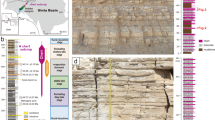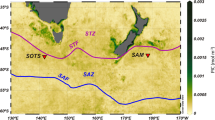Abstract
GREAT Bear Lake is situated on the Arctic Circle at a point where the Pre-Cambrian Shield emerges from the adjoining Cretaceous formations. The present lake surface is 143 m above sea level, and because the maximum depth is 542 m there is a cryptodepression of 309 m. The shape of the lake could be described as amoeboid with five arms joining a central “body”. McTavish Arm, with a mean depth of 102 m, contains the deepest water at a point close to the eastern shore. The total surface area is 31,153 km2 and the volume 2,200 km3. Surface temperatures seldom exceed 4° C and, although the bottom temperature remains close to 3.56° C throughout the year, complete turnover does not occur annually1. The lake is extremely oligotrophic with oxygen saturations up to 112 per cent (14 mg/l.) in the upper 50 m in summer and minimum values very close to saturation (12.6 mg/1.) near the bottom at the end of winter. Total dissolved solids are low: 80 p.p.m. with a specific conductance of 155 µmhos. Ice cover reaches a thickness of 2 m by the end of winter and break-up does not occur until the middle of July; this is followed by an open-water season of 3–4 months, the lake becoming ice-covered during November.
This is a preview of subscription content, access via your institution
Access options
Subscribe to this journal
Receive 51 print issues and online access
$199.00 per year
only $3.90 per issue
Buy this article
- Purchase on Springer Link
- Instant access to full article PDF
Prices may be subject to local taxes which are calculated during checkout
Similar content being viewed by others

References
Johnson, L., J. Fish. Res. Board, Canada, 23, 963 (1966).
Schütt, F., Ergebn. Plankt. Exped. der Humboldt-Stiftung, 4, 1 (1895).
Zimmerman, W., Z. Bot., 23, 419 (1930).
Bursa, A. S., Micropaleontology, 10, 346 (1963).
Craig, B. G., and Fyles, J. G., Canada Dep. Mines and Tech. Surv. Paper, 60–10, 1 (1960).
Johnson, L., Syst. Zool., 13, 76 (1964).
Högbom, A. G., Bull. Geol. Inst. Univ. Uppsala, 14, 241 (1917).
Ricker, K. E., Canad. J. Zool., 37, 871 (1959).
Holmquist, C., Berlingska Boktryckeriet, Lund (1959).
Author information
Authors and Affiliations
Rights and permissions
About this article
Cite this article
BURSA, A., JOHNSON, L. Nannoplankton of Marine Origin from Great Bear Lake in the Northwest Territories of Canada. Nature 214, 528–529 (1967). https://doi.org/10.1038/214528a0
Published:
Issue Date:
DOI: https://doi.org/10.1038/214528a0
Comments
By submitting a comment you agree to abide by our Terms and Community Guidelines. If you find something abusive or that does not comply with our terms or guidelines please flag it as inappropriate.


